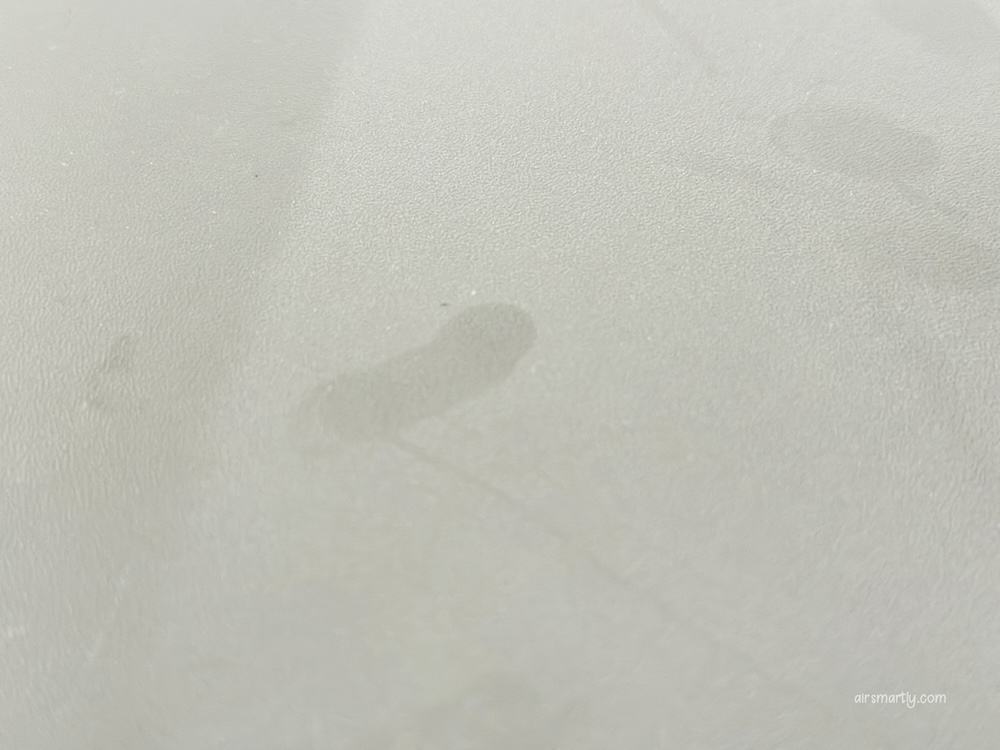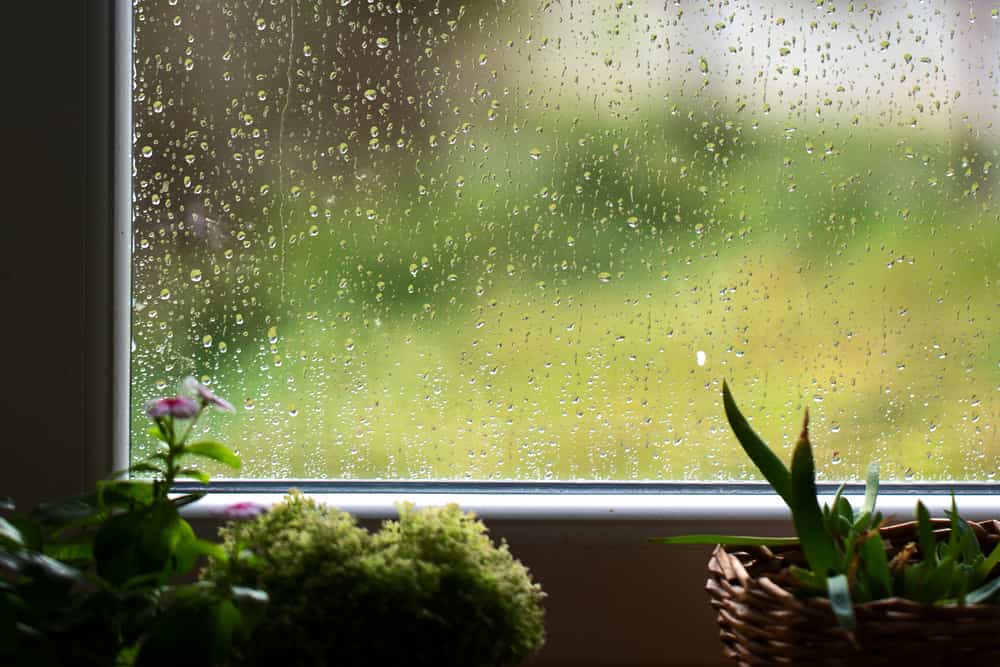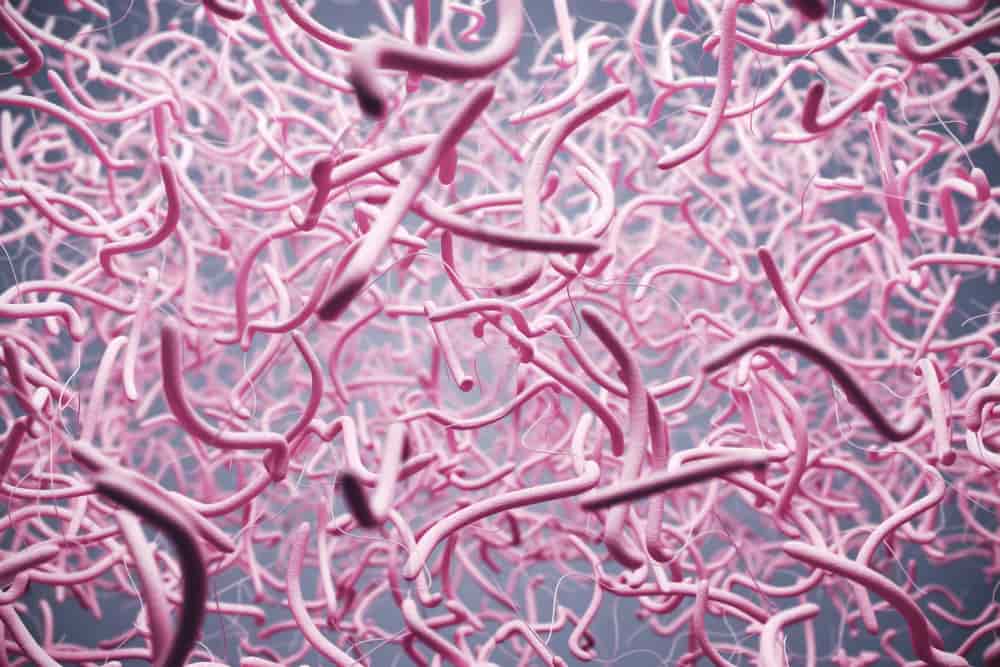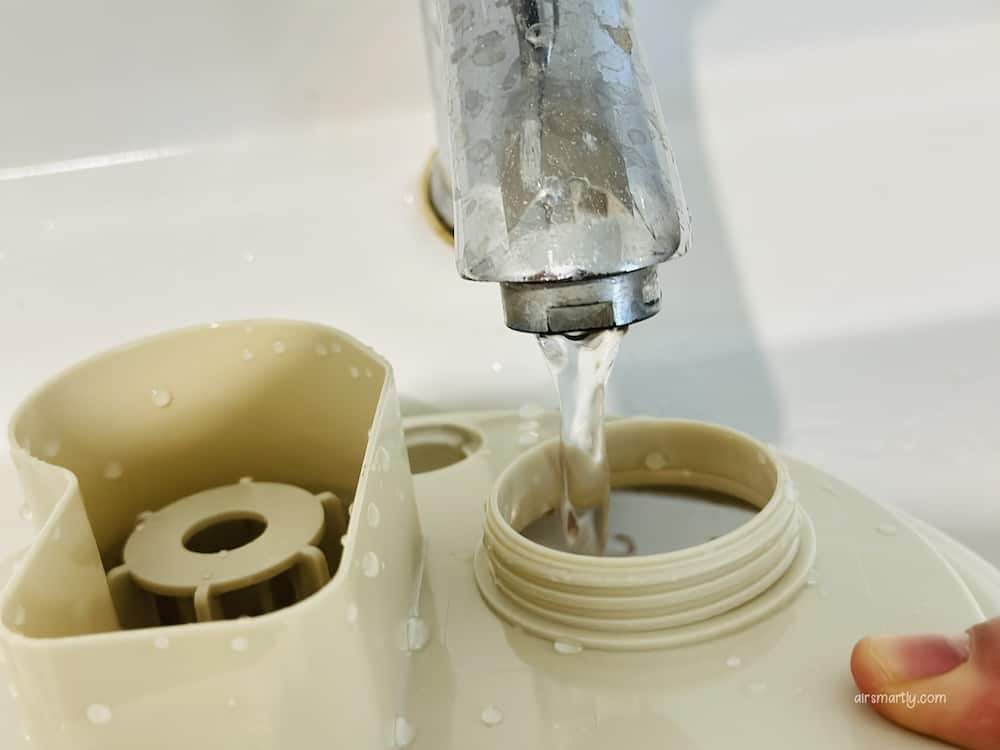A humidifier is the standard solution for dry air. You can find it in almost every home in an arid region. Some people use a furnace-mounted humidifier, while others prefer a portable one. Anyway, it is a simple device that effectively improves our life quality.
Unfortunately, it is also something that can go wrong. Some customers found that their humidifiers can produce white dust that leaves on the furniture and other surfaces.
In fact, the white dust comes from the mineral content in the water tank. It is emitted into the air with moisture particles and lands on furniture nearby.
Is white dust harmful? How to avoid it from a humidifier? I will provide every information you need to know about “white dust in humidifiers” in this post. Don’t panic! It is an easy problem to fix.
What is the white dust in a humidifier?
The white dust often consists of calcium and magnesium. It is a kind of fine particle that comes from the mineral content in the humidifier’s reservoir.
It doesn’t come out of the humidifier alone. It often goes with the moisture particles, mold, and mildew together and gradually lands on both flat and vertical surfaces. You can also find it on the leaves of household plants.
Luckily, it will not leave any permanent stains on the surface but will add extra work of dusting.
Why does my humidifier leave white dust?
The reason why your humidifier leaves a white film on everything is that it contains too many minerals in the tank.
Even though most manufacturers recommend using distilled water with a humidifier, many people still insist on using tap water because it is convenient and cheap.
Depending on where you live, tap water includes a certain amount of minerals. Water that contains 0 to 60 mg/L (milligrams per liter) of calcium carbonate is classified as “soft water.” 121 to 180 mg/L of calcium carbonate in the water is the standard for “hard water.”
Humidifiers filled with hard water are more prone to producing white dust.
Usually, minerals will not get into the air when water evaporates naturally. But some types of humidifiers can break mineral deposits into fine particles and push them out into the air.
In addition to that, if you don’t change the water regularly, the mineral will settle down and become mineral deposits, which lead to more white dust. The stagnant water is also a breeding ground for mold and mildew, posing health risks to your family.
Is white dust harmful? Is it bad to breathe in white dust from a humidifier?
White dust is not exactly harmful, especially for a short time. As we discussed earlier, it doesn’t have toxic chemicals, and the components are pretty similar to the mineral content in our drinking water.
However, it could be dangerous to breathe in white dust as it can penetrate your lungs, causing other conditions. A study in mice has shown that initiated a cellular response in the lungs even though no severe acute inflammation is detected.
The point is not about the components of white dust, and it is about the fine particles that can have adverse effects on the lungs or other organs.
Beyond that, mold and bacteria will also set when white dust comes out of the humidifier. When they find the new residence in your body, you are susceptible to several diseases.
So the white film on the surface will not hurt you, but you should avoid inhaling it.
Which type of humidifier doesn’t produce white dust?

Only ultrasonic humidifiers and impeller humidifiers will produce white dust. You can opt for other types of humidifiers if you want to say goodbye to white dust forever.
As I said, the natural evaporate process will leave minerals behind in the tank. For example, when you boil the water, the minerals in the tap water will form a scale left on the bottom of the pot.
Evaporative humidifiers, vaporizers, and warm mist humidifiers work on a similar principle. The water droplets get into the air through evaporation, even though some use a fan or wick to facilitate the process.
The mechanisms of ultrasonic humidifiers and impeller humidifiers are different. These cool mist humidifiers directly break the water down into tiny water droplets, meaning that the mist does not originated from evaporation but by means of vibrating or flinging.
The mineral will also be dissolved and sent out in this process, turning to the white dust you find on the furniture.
How to prevent white dust from a humidifier?
Cleaning the white dust off is like a walk in the park. You can wipe it off with a soft damp cloth. However, if you want to avoid it as much as possible, you need to take some measures.
Change out the water every day
The standing water will accumulate more mineral deposits, resulting in more white dust in the air. Instead of leaving the remaining water in the tank and filling the water directly, you should empty the tank before refilling.
Do it every day, and it is also an excellent solution to prevent tank water from running out.
Clean humidifier tank and base regularly
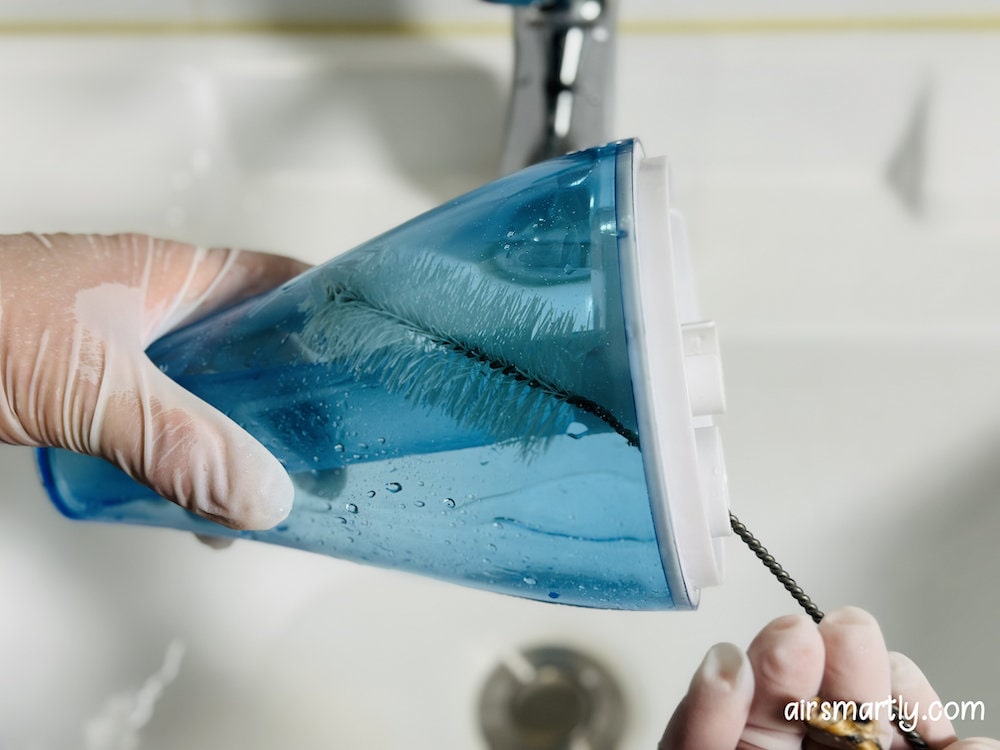
You ought to clean and disinfect the tank and base at least once a week. It can remove all the mineral buildup and kill bacteria and mold. Using vinegar to clean a humidifier is very common since it is natural and effective.
Rinse off the tank with water and let it air dry before putting it back.
Use a demineralization cartridge

Some humidifiers come with a built-in cartridge, and some don’t. If you have a humidifier with an inner cartridge, you should remember to replace it every few weeks as per the instruction manual.
You should also purchase an extra demineralization cartridge and put it into the water tank. It will absorb a large proportion of mineral buildup. This type of cartridge also needs to be disposed of every 30-40 fillings.
Install a water softener system
Personally, I had my water softener system installed a few years ago. I like it even though the upfront cost is a bit high.
All the water coming out of the water supply will be softened by implementing it. It will not only benefit humidifiers, but dishwashers, kettles, and even shower heads.
As the mineral in tap water decrease, you will see less white dust released from the humidifier.
Use distilled water
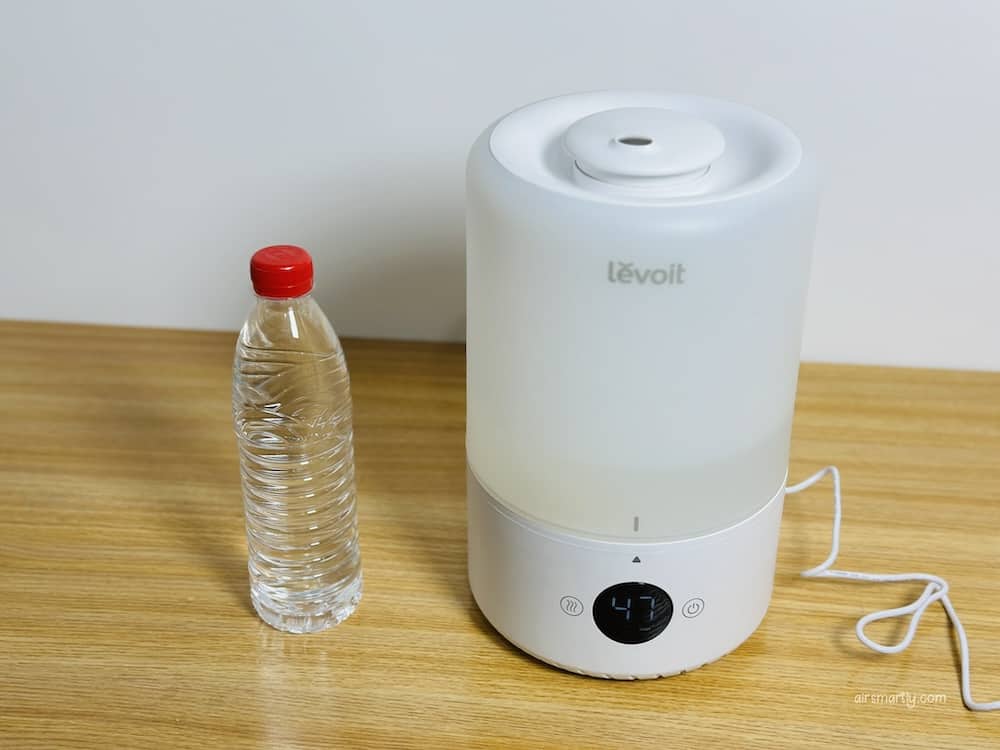
Since distilled water doesn’t contain any mineral content, it is the ultimate solution for preventing white dust. You can purchase it at any local store or online.
On top of it, you can make distilled water for your humidifier at home, which can save you a bunch of money in the long run.
Choose another type of humidifier
If all the solutions don’t make sense to you, you could opt for getting a new humidifier. Evaporative humidifiers and warm mist humidifiers don’t produce any white dust.
However, all these mineral buildups will settle down in the tank or filter. The downside is that the buildup can clog the machine or filter gradually.
So you should be diligent and commit to regular cleanliness or replacing the filter every one or two months.
Conclusion
White dust is a common nuisance when you use a humidifier at home. The white film comes from the mineral content in the humidifier tank and sticks to surfaces in the room.
White dust is not harmful regarding its components. But the fine particles can be inhaled into the lungs, which have potential adverse effects on your health.
Only ultrasonic and impeller humidifiers produce white dust. You can avoid it simply by choosing a humidifier in another category.
But it doesn’t mean that you can get rid of the regular maintenance. Otherwise, not only the mineral buildup can damage your machine, the mold and bacteria can wreak havoc on your health.
If you don’t want to purchase a new one, you can solve this problem by using distilled water or a demineralization cartridge. Installing a water softener system is also beneficial, even though it can be costly.

